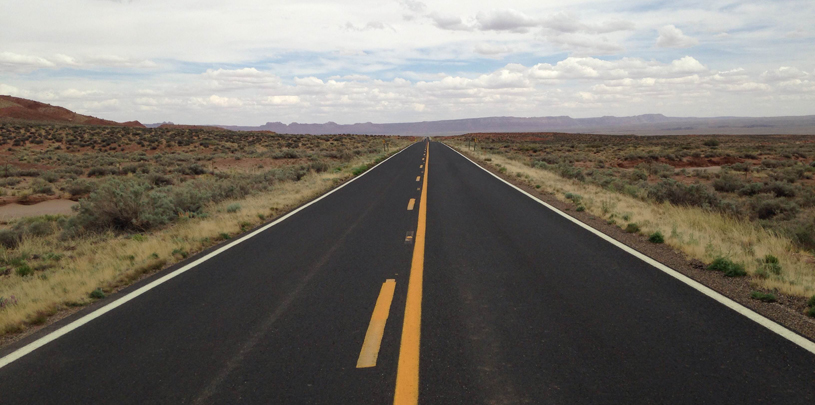

by Cerissa Hoglander, North Rim Ranches Associate
Habitat fragmentation is a global concern, and the Colorado Plateau is no exception.
Maintaining the connections between protected habitat “islands” is important for reducing the vulnerability of these landscapes to threats such as large-scale wildfires, expanding energy development, and the spread of invasive species like cheatgrass.
Grand Canyon Trust is working to identify areas where maintaining habitat connectivity, or movement pathways between habitat islands, is critical for the persistence of wildlife species on the Kane and Two Mile landscape, located on the North Rim of the Grand Canyon. This wild landscape includes the ponderosa pine forest of the Kaibab National Forest and the pinyon-juniper woodland and desert sagebrush of the Vermilion Cliffs National Monument.
The Kane and Two Mile region is home to a rich diversity of plant and animal species, including the mountain lion. With their wide range and long-distance movements, mountain lions are a primary focal species for habitat connectivity modeling and can serve as a proxy for the conservation of other species in the region. These connectivity models and maps, developed in collaboration with the non-profit science organization Conservation Science Partners, Inc., use satellite imagery, as well as data on topography, vegetation, and other landscape characteristics, to predict areas of high or low connectivity across the landscape. More specifically, these models draw on concepts from electronic circuit theory. “Connectivity models created using circuit theory treat the landscape as a network of electronic circuits. Think of a typical circuit board. Different habitat features have different levels of resistance to an animal moving across the landscape,” says Dr. Brett Dickson of Conservation Science Partners. “Based on measures of ‘current flow,’ our models predict the corridors where animals are most likely to move from one habitat patch to another.”
In the summer of 2013, Trust staff and volunteers hiked deep into canyons along the Kaibab Plateau’s East Monocline to set up over 40 wildlife camera ‘traps’ in areas predicted by our models to be corridors. Among other species, the pronghorn antelope, bobcats, coyotes, and bighorn sheep that moved through the field of view of the carefully placed camera traps triggered the shutter and were recorded with a candid shot.
Throughout this effort, camera traps were maintained by staff and volunteers who ensured that the cameras kept working through the flash floods, lightning storms, and sun-scorched summer days, and regularly replaced data-rich memory cards. As daytime maintenance trips were not typically rewarded with sightings of mountain lions or other wildlife, committed staff and volunteers were eager to see the fruits of their labor recorded by the trap photographs. These data will allow us to provide guidance to conservation efforts targeted at maintaining the connections among important habitats patches on the Colorado Plateau. This effort represents just one of the many research projects on the Kane and Two Mile landscape as the Trust works to use science as a foundation for well-informed conservation action. In the fall of 2013, volunteers collected multiple rounds of memory cards and logged many hours in the field, with the red-dirt-caked hiking boots to prove it. Back at the office, thousands of photographs were tediously inspected by Trust interns and staff. All were anxious to document our target species, the mountain lion, and get a glimpse of other elusive northern Arizona wildlife otherwise invisible to most visitors to this remote and wild region.
Read our intern Erin’s behind-the-scenes account of this camera trapping effort in our final blog post of this series.
As 2024 draws to a close, we look back at five maps we created this year that give us hope for 2025.
Read MoreA small victory in the legal case challenging Daneros uranium mine, near Bears Ears National Monument.
Read MoreMugs, handmade soaps, high fashion, jewelry and more. There's something for everyone on your holiday shopping list.
Read More